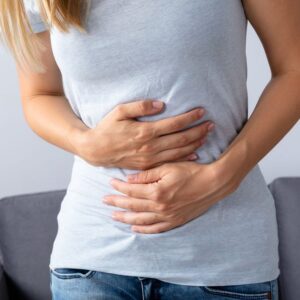For many years, matcha was considered a green insider tip from Japan. After a few centuries, the trend product has prevailed. The green powder can be found in cafés, restaurants or in the supermarket and is perfect as a cold drink, pastry or spice.
Matcha, a finely ground green powder, not only imparts a unique taste, but also a bright green color. In addition, the powder is used not only in the kitchen, but also in research laboratories. There, numerous positive effects of matcha powder on human health are examined.
Depending on where and how the powder is used, its quality can vary. A noble selection is used for a tea ceremony on special occasions. In order for the taste to come into its own when baking, the Matcha must have a different consistency.
This is how good matcha powder is made
Good matcha is made from tencha: the leaf flesh that’s left over after the vessels have been removed. For some fine varieties, this separation is done by hand.
As a rule, the plants are shaded a few weeks before harvest. This allows them to mature a little longer and store more of the promising substances. The leaf green is intensified. The leaves for the matcha are then steamed to keep their color and dried. Finally, the leaf flesh is separated from the remaining components.
There are also ceramic matcha grinders, but traditionally the tools are made of granite stone, which is notched in a special way. The grinding process takes place very slowly. This is how the bright green powder is made from the leaf tissue of the green tea.
How did Matcha tea come to Germany?
Matcha originated in China. From there, the popular drink found its way to Japan. The current matcha trend in our latitudes came via a detour, namely via the USA. At first people saw and tasted the different kind of green in the hip cafés with enthusiasm: as Matcha Latte, Iced Matcha Latte, in smoothies – or as a classic tea with grass-green foam.
Matcha is not only drunk, but also eaten. In a special form, the powder tea is also suitable for refining and naturally coloring pastries, chocolates, ice cream or rice dishes.
This is how matcha tea is made
Even the preparation of a cup of pure matcha is a kind of little ritual. It’s not really a tea ceremony. But in this reduced form, it is more of a prelude to the enjoyment that follows than throwing a tea bag into a cup.
In addition to the tea powder and 80 degree hot water, the following utensils are required for the preparation: a Matcha bowl, called “Chawan”, a dosing spoon, called “Chasaku”, and a Matcha whisk, called “Chasen”. The famous broom is made from a single piece of bamboo, including the bristles. Professionals preheat the cup and moisten the broom.
Depending on taste, about 100 milliliters of water, which is as soft as possible, are poured over one to two grams of the powder per cup. Then the Chasen makes his appearance: with a loose wrist he should repeatedly describe an M-shape (as in “M-atcha”) on the surface of the tee until foam forms.
Not quite as stylish, but simpler and just as effective is using an electric milk frother. This saves you at least the initial difficulties and the training with the chase.
More vitamins in cold matcha tea
Cold tea can be prepared in a classic shaker: one to four measuring spoons of powder are shaken with 150 to 500 milliliters of water. Ice cubes also cool the drink. Due to the low water temperature, the vitamins contained in this Matcha variant are not destroyed.
The “green foaming jade”, as Matcha is also called in Japan, must be stored properly so that it does not lose any of its quality and aroma. It is advisable to store it in a dry and cool place, preferably in a so-called natsume, an airtight container, in the refrigerator.
This is how the green powder improves health
In addition to enjoyment, Matcha can also be good for your health. It has been used in traditional Chinese medicine for thousands of years. The various health-promoting ingredients in green tea are more concentrated in matcha than in the infusion of green tea leaves. The effects are the subject of research.
Anyone who drinks matcha feels the effects of the powder relatively immediately: about an hour later, many feel more alert and able to concentrate. That’s because of the caffeine. Since the body absorbs the caffeine from the tea in which it is bound differently than from coffee, it has a slower, longer and less stomach-damaging effect.
In addition, the caffeine in Matcha has an opponent that has a positive influence on its effect: the L-theanine makes you calmer and more balanced and thus contributes to the fact that enjoying Matcha promotes alertness and reduces the feeling of stress.
Catechins, which are abundant in matcha, help protect cells and boost the immune system. Further research has shown that catechins inhibit the growth of cancer cells, keep cholesterol levels low and have a positive effect on the heart and circulatory system.
Can matcha also help against Alzheimer’s, Parkinson’s and insomnia?
Research results on catechin EGCG even give hope for effectiveness against the progression of Alzheimer’s and Parkinson’s disease. However, most of the successes of these studies have so far been observed primarily in the laboratory.
After all, participants in a Japanese study recently confirmed a positive effect on their sleep: Those who regularly consumed green tea powder often noticed an improvement in sleep quality.
However, matcha powder may also contain (harmful) substances that people do not like to eat. After all, the whole leaf “with content” is used to make the powder. Therefore, when it comes to Matcha, you should pay particular attention to organic quality and origin from Japan. Despite the organic quality, however, a relatively high level of aluminum pollution is repeatedly found.
In addition to all the health-promoting ingredients, matcha also contains oxalic acid, which hinders the absorption of certain minerals such as magnesium from the body. Drinking matcha with a meal can therefore be counterproductive. For these reasons, and also because of the high caffeine content, it is advisable to enjoy matcha in moderation, a maximum of three cups per day.





